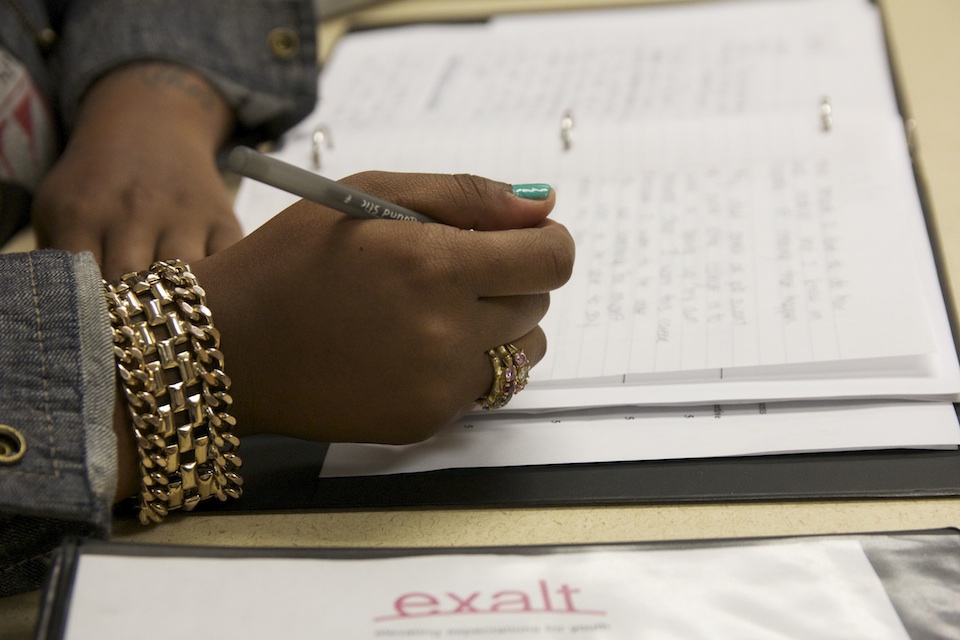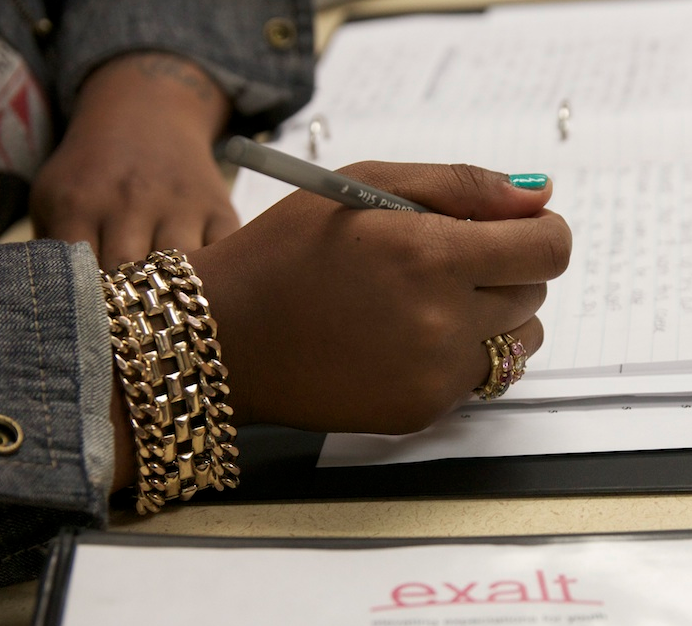
Susan Armitage
NEW YORK -- On a recent Friday, 16-year-old Makala woke up and put on yellow skinny jeans and a trim black jacket — a stylish outfit that marked her temporary freedom.
Until recently, most days Makala wore khakis and a green shirt to satisfy the dress code during a 10-month sentence at The Children’s Village in Dobbs Ferry, N.Y. Good behavior had earned her a home pass to visit family a few weeks before her mid-April release.
Since her first arrest at age 12, Makala, whose last name is not used because she is a minor, has bounced through a number of placement and transition programs. As she recounted her time in the system she absent mindedly tore a reporter’s business card into tiny pieces. She described a menacing environment, rife with constant threats.
“Boys don't start a lot of problems,” she said. “Girls, they always seem like they have a point to prove.”
While the majority of youth offenders are male, the nation’s juvenile justice system is dealing with more and more girls. In 2010, girls made up 29 percent of all juvenile arrests nationwide, and though juvenile crime rates are dropping overall, the decrease is less pronounced for females.
Like boys, girls in the system often have histories of abuse and mental health issues, researchers say. But, they add, girls in the system are less likely to get the help they need, and the long-term consequences of delinquency may be more serious for girls than for boys.
Delinquency cases for girls have skyrocketed in recent decades, increasing 92 percent between 1985 and 2002. And New York has its own share of troubled girls. Statewide, about 20 percent of juveniles in residential placement were female, according to 2010 statistics from the Office of Juvenile Justice and Delinquency Prevention. In New Jersey, the figure was about 7 percent.
It’s unclear why females now make up a greater portion of juvenile arrests than in the past, but changing attitudes around gender may play a role, experts say. When Deborah Lashley started working in the juvenile justice system 20 years ago, she said, girls were less likely to be remanded and sentenced than boys or got lesser sentences for the same crimes. She sees a difference today.
“There was more that kind of paternalistic view of them,” said Lashley, who manages the Girls Re-entry Assistance Support Program, known as GRASP, an initiative of the Brooklyn district attorney’s office. “Now I think people are beginning to realize that females can be just as dangerous or violent or problematic as the males.”
Research findings are mixed on whether girls are treated more harshly by the system. But in Makala’s experience, boys in detention get more privileges, such as home passes, and staff members are harder on the girls.
She thinks ‘boys-will-be-boys’ gender stereotypes have something to do with it.
“You’re not supposed to be in the jail,” she said. “You’re supposed to be at home, acting like a lady.”
Makala didn’t want to talk about what got her into trouble, but like many girls in the system, it started with problems at home. She is the youngest of four siblings, including a 20-year-old brother who is in prison.
“Everything he's doing, it just seemed like I'm following right behind him,” she said.
While doing time, Makala wrote poems, sent letters to her brother — his responses arrived opened, screened for security threats — and thought a lot about the influences in her life.
Her relationship with her mother has been rocky, but Makala is trying to understand her and her past better.
“If my mom wasn't raised in a happy home, I can't expect that home to be happy,” she said. “I have to work around or work with my mother, teach her how a family's supposed to be.”
Along with troubled home lives, female offenders are also more likely to suffer from mental illness than male offenders and report being victims of child abuse at greater rates, researchers have found. A quarter of girls who commit violence have been sexually abused, while the rate is only 1 in 10 for nonviolent girls, University of California, Irvine psychology professor Elizabeth Cauffman noted in her paper, “Understanding the Female Offender.”
Girls are also typically more sensitive than boys to what they see as threats to their relationships. The desire to dish out payback or protect a friend can fuel assaults that get them in trouble.
“With females, you find that it's usually somebody they know, whereas males often will take random victims,” Lashley said. “It'll be over a boy, over something they said, it's a relative.”
On the inside of the system, conflicts are also common. Youth in different non-secure programs may be sent to the same school, breeding suspicion.
“The girls see each other, they don't know them, so they're looking at each other, they start snickering, they start laughing, then a fight breaks off,” Makala said.
Lashley said changes are needed to serve girls effectively in a juvenile justice system designed for boys. Her program takes a gender-sensitive approach by building supportive relationships and safe spaces for girls to talk about their problems.
“Females and males socialize very differently,” she said. “It's taken time for the system to come around, to understand that to really rehabilitate females, you need things slightly different than you do for males."
When juvenile delinquents grow up, both males and females are more likely to marry someone involved in illegal activity. But while marriage and parenthood are linked to the end of criminal activity for boys, according to “Understanding the Female Offender,” for girls, the opposite is often the case.
Their relationships may be fraught with conflict and abuse, including physical violence initiated by the female. And without adequate support for girls and young women coming out of the system, the instability that drives juvenile delinquency is more likely to be passed on to the next generation.
Makala is determined to break the cycle of negative behavior she experienced growing up. She’s transferring to a boarding school in Brooklyn this fall and has her sights set on college. She plans on becoming a behavior therapist for troubled youth.
“Fighting, people stealing, people yelling at each other, people not caring, just leaving you,” she said. “It's all you've seen your whole life, so that's all you know. But if you break away from it, then you could change the whole pattern, so when you have kids, your kids don't have to go through that."


The above topic is hugely important. For this reason ARISE Foundation (non-profit) has spent years developing unique curricula specifically to provide girls in the juvenile justice system with life management skills. ARISE group lessons are conducted by staff while the youth are in the system and are eminently useable once released.